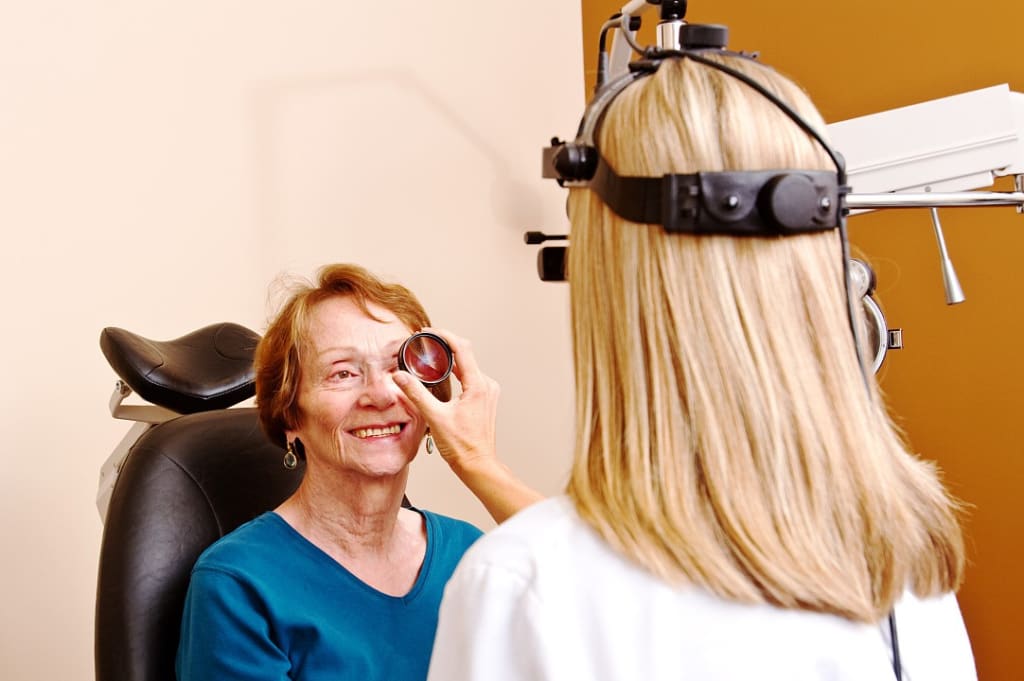Why are Women at Higher Risk of Eye Disease?
The article explains why women are at higher risk of eye disease.

Vision is a vital sense that allows people to perceive and appreciate the beauty of their surroundings. Women, on the other hand, are more likely than males to get eye disorders. According to the American Academy of Ophthalmology (AAO), women are more prone than males to acquire eye diseases such as age-related macular degeneration (AMD), cataracts, glaucoma, and more.
Over the last 20 years, research has revealed that females are at a considerably greater risk of visual alterations, impairment, and loss than men. In actuality, women have a 12% higher risk of losing their vision than men do. According to the National Eye Institute, women make up two-thirds of people worldwide with visual impairment or blindness. Though significant eye disorders are not exclusive to women, they might have different and more severe impacts on their vision than males. So, why are women at higher risk of eye disease?
Many biological factors contribute to eye difficulties that women have no control over. Knowing the hazards, on the other hand, allows women to take actions toward vision protection, increasing the percentage of women who have healthy eyes and vision. Here, we'll discuss vision–related issues among women. These include the factors affecting women's vision, common causes of vision loss among women, and ways to protect your vision.
Factors Affecting Women's Vision
Hormonal changes, aging, and lifestyle choices are just a few things that might impact women's eyesight. Hormonal changes, such as those seen during puberty, pregnancy, and menopause, can cause visual alterations. But how do hormones really impact vision in women?
Hormones are chemicals that carry information to many sections of the body and influence numerous vital activities. These include the ability to reproduce, growth and development, sexual function, and sexual mood.
Common Causes Of Vision Loss Among Women
Females outlive males by an average of 5.4 years, according to CDC studies. Even while five more years may not seem like much, they can increase a woman's risk of developing an age-related eye disease. Several eye diseases are more common in women. Common vision disorders among women in older age include:
Cataracts are caused by clouding of the lens of the eye. They develop as a result of the lens proteins in the eye clumping together with age. Cataracts often develop slowly over time and might result in dim, foggy, or blurry vision.
If left untreated, cataracts can cause vision loss in extreme situations. Cataract surgery can be used to remove cataracts and restore eyesight. Though cataracts are frequent among the elderly, statistics reveal that ladies are more likely than males to get them.
Glaucoma is one of the most common ocular diseases in women. In fact, women surpass males in glaucoma cases globally. High pressure in the eye causes optic nerve injury. The mismatch between the amount of aqueous humor produced and its capacity to exit the eye causes elevated pressure.
Eye pressure that remains too high for an extended period of time might harm the optic nerve at the back of the eye, resulting in vision loss. Glaucoma treatment options include eye drops, oral medicines, and surgery.
Age-related Macular Degeneration
Age-related Macular Degeneration (AMD) is a disorder characterized by the loss of light-sensitive cells (photoreceptors) in the macula is known as. The macula is the core portion of the retina that controls your sharpest central vision and color vision.
A person with advanced AMD may only have a little amount of their central vision or none at all, yet they still retain their peripheral vision. There is no cure for AMD, and current therapy is only helpful for a subset of the disease known as wet AMD. According to 2010 statistics, women accounted for 65% of AMD cases, while males accounted for 35%.
Diabetes retinopathy is an effect of diabetes that damages the blood vessels in the retina, the light-sensitive tissue at the back of the eye. Diabetic retinopathy in women can impair eyesight in numerous ways
- Blood vessel damage: High blood sugar levels can harm the tiny blood vessels in the retina, causing them to leak or get clogged. This can result in vision loss since the retina is deprived of the necessary blood flow and oxygen.
- Macular edema: Diabetic retinopathy can induce swelling in the macula, the central region of the retina responsible for fine, detailed vision. Macular edema is a disorder that causes impaired vision or difficulties seeing tiny details.
- Unusual blood vessel growth: Diabetic retinopathy can produce aberrant blood vessel growth in the retina in some situations. These new vessels are unstable and have the potential to bleed into the eye, resulting in vision loss or blindness.
About the Creator
Zoomax-Living with Low Vision
ZOOMAX is a high-tech low vision solution company focusing on the research and development of the high quality low vision aids.
Enjoyed the story? Support the Creator.
Subscribe for free to receive all their stories in your feed. You could also pledge your support or give them a one-off tip, letting them know you appreciate their work.






Comments
There are no comments for this story
Be the first to respond and start the conversation.